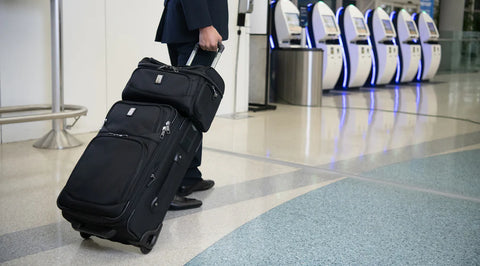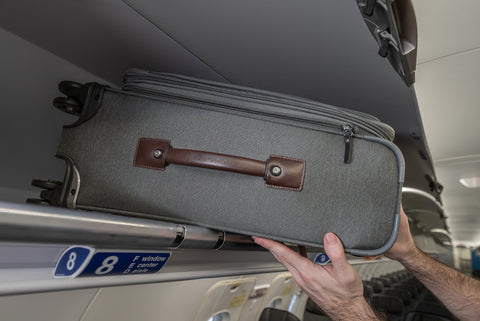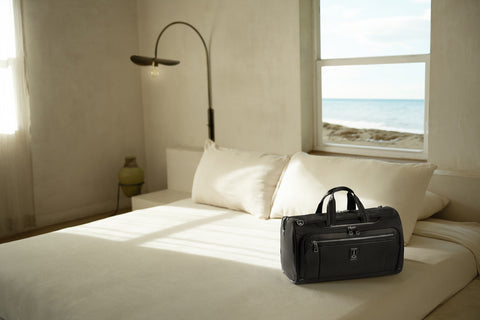Tiny house living seems to be all the rage, but the one thing that bothers many people about it is that there’s no bathroom, let alone a shower. Or if there’s a bathroom, it’s a very tiny toilet and it’s in the same closet as the shower.
Do you know what has a toilet and a shower already in it? An RV! If you want to practice tiny home living, still be mobile, and have ALL the important features of a house, you need an RV. The best thing about it is if you ever get tired of the scenery, you can just move. There are places that you can go with an RV that you can’t with an ordinary tiny home, and you can pile the whole family into it and take your own RV trip. It’s especially helpful if you want to take a vacation, but you’re still worried about COVID.
But how do you plan a successful RV trip, especially if you’ve never driven or ridden in one before? Here are a few tips from a much longer article by Mike and Anne of HoneyTrek over on the Nomadic Matt website.
1. PICK THE RIGHT SIZE RV FOR YOUR FIRST RV TRIP
Mike and Anne recommend a 21-foot camper for your first RV trip. The bigger ones may look cooler, but as they said, “every foot in length costs in mobility.” And the shorter units, between 16 – 19 feet, may have more mobility, but there is a tradeoff.
"First, life ain’t so pretty without your own indoor shower and bathroom. And, while we respect the van lifers who make do with public restrooms, bucket toilets, and catholes (digging a hole outside when you need to go to the bathroom), let us tell you the virtues of having a flushing loo: privacy, cleanliness, and autonomy."
If you’ve never driven an RV, you can rent one to try it out first. Just Google “RV rentals near me” and then read the reviews. See if you can take one for a test drive to practice. If not, rent a 21-foot Uhaul truck for a day and drive around to get used to driving something that large.
2. CHARGE YOUR HOUSE BATTERY
Each RV has a house battery that operates the lights, water pump, fans, and power electronics. You can charge it just by driving a few hours each day. (Especially useful if you are following the famous “year-long road trip” that keeps you in 70-degree weather every day.) Or you can plug in at a campground. Or you can run a generator. Or you can have solar panels.
If you’re not sure, watch some of the van life and digital nomad videos and learn some of their tricks. They have some cool methods of staying plugged in and powered up.
3. USE RV TRIP PLANNING TOOLS TO FIND FREE AND PAID PLACES TO CAMP.
You can stay at a basic campground for around $10 – $30 per night, or upgrade to an RV camp with power, water, and sewer, plus shared amenities like a pool for $35 – $80 per night. If you’re living on the cheap on your RV trip, you might want to spring for a night or two at an RV park just to load back up on water and power, and to empty your chemical toilet.
However, there are plenty of free spaces to stay around the country as well.
“The federal government has reserved 640 million acres of public lands (national forests, BLM [Bureau of Land Management] land, national conservation areas, etc.) for your enjoyment,” said Mike and Anne. And you can stay there for free. There aren’t as many amenities — sometimes it’s just a clearing in a forest — but if you’ve already loaded up on water and power, that’s great, because you’re just there for the solitude and the views.
This type of camping is often called “boondocking,” although it’s also called dry camping, freedom camping, and wild camping. And they recommend the Ultimate Campgrounds app to find sites around you. They also recommend iOverlander and FreeCampsites.net if you’re not having any luck with Ultimate Campgrounds.
You can even try “urban boondocking,” if you’re staying in a city. Just make sure you avoid areas that say “no overnight parking” and avoid drawing attention to yourself with excessive lights and noise.
4. SAVE MONEY ON GAS
An RV trip is going to use up a lot of gas because these things don’t get great mileage. But you can save a little money by using the GasBuddy app (which really is a must for any road trip, not just an RV trip), as well as signing up for a gas station’s loyalty program. For example, BP’s loyalty program will give you a $.05/gallon discount up to a certain number.
Also, keep your tires at their proper inflation and drive at 55 mph and under. That not only saves gas, but it extends the life of your RV.
5. USE AN RV ROAD TRIP PLANNER TO TAKE THE BACK ROADS
The whole point of an RV trip is the journey and not the destination. It’s about seeing the country and its wonderful scenery, which you just don’t get on the interstate. To make the most of your trip, and to see the most of the country, set your GPS to avoid interstate highways and stick to the state highways and US highways. Use an RV road trip planner to find the best routes and find the campgrounds and RV-friendly stops along the way.
Check out our article on America’s quietest road trips for a few ideas, or just pick a few places on your route and try to get there without any interstates. Also, make it a rule to avoid big cities just for the additional challenge. Visit the places that the highways forgot and see some of the charming parts of America.
Finally, if you’re going to take a long RV trip and want to get some work done while you’re there, be sure to check out our article Six Pieces of Hardware You Need to be a Digital Nomad. And don’t forget to check out our 7 Road Trip Travel Tips and and our rundown of thebest travel podcasts to reference before or during your drive.
Also, don’t forget to get travel insurance in addition to auto insurance for the RV. You’ll probably even want AAA in case you suffer a breakdown, especially if you’re renting an RV or if you bought your first used one.
Have you ever gone on an RV trip? What tips do you have for anyone else to make it successful? What are some of the problems to avoid? Do you have any RV trip planning tools you would recommend? Share your wisdom (and best stories) on our Facebook page, or on our Twitter stream. You can also find us on our Instagram page at @TravelproIntl.



